Design Thinking is indispensable in our modern business world. For years, the Design Thinking approach has been gaining popularity and is being used by many large companies to develop innovations. In this article, we will look at where Design Thinking comes from, what it can be used for, and how it works. And above all, how Management 3.0 practices can support this process.
By Luiza Lipień, OKR Trainer, Agile & Lean Product Coach, and Management 3.0 Facilitator from Poland. Luiza always strives to upskill herself, learning something new. Since she delved into Design Thinking, she integrates this into her work to focus on the user and their needs, helping create the most effective solutions. In this article, she explains what Design Thinking is all about, why it is important, and how to use this approach in combination with Management 3.0 to make it even more impactful.
Quick Links
- Definition and Origins of Design Thinking
- Design Thinking as a Formal Approach
- Applications of Design Thinking Across Fields
- The Design Thinking Process Explained
- Design Thinking and Management 3.0
- Design Thinking and Agile
Design Thinking is a human-centered approach to innovation that draws from the designer’s toolkit to integrate the needs of people, the possibilities of technology, and the requirements for business success.
Tim Brown, Executive Chair of IDEO
Definition and Origins of Design Thinking
The term “Design Thinking” is not new. The combination of those words has been used since the 1960s in the context of designers’ (graphic designers, packaging designers, or corporate brand designers) work and design approach. However, only in the 21st century, Design Thinking emerged as a formalized problem-solving methodology.
Nowadays, we perceive Design Thinking as an approach to creating innovative services and products. The starting point is a deep understanding of the user’s needs. The following steps involve diagnosing the situation, formulating the problem well, generating innovative solutions, prototyping, and testing. An integral part of the process is the continuous verification of assumptions and testing of various proposals. Design Thinking enables decision-making based on customers’ wants and needs rather than relying solely on historical data or risky instinct-driven bets without evidence.
This approach has gained popularity in recent decades owing to its success in high-profile global organizations like IDEO, IBM, SAP, Samsung, and Raiffeisen. Design Thinking is also a subject of study at leading universities such as Stanford University in the USA and the Hasso Plattner Institute in Germany.
I delved into the world of Design Thinking in 2021. While familiar with some of its aspects, I craved a deeper understanding of the entire process. Fueled by this desire to gain a deeper understanding of the specific techniques involved, I participated in a five-day intensive workshop for Design Thinking moderators offered by the Design Thinking Institute, which follows the d.school methodology. During the workshops, I discovered how Design Thinking perfectly complements Management 3.0 – both approaches prioritize people-centric problem-solving! I was thrilled by this realization. Not only could I start incorporating Design Thinking elements into my training offerings, but it also helped me empathize with future participants in my training. I’ve added a pre-training welcome pack mailed to participants’ homes to enhance their training journey, including leaflets, handouts, and books for trainings in Polish.
Design Thinking as a Formal Approach
Research on Design Thinking, pioneered at Stanford University in collaboration with the Hasso Plattner Institute, led to the establishment of the “d.school.” David Kelley, co-founder of IDEO, was instrumental in its development. The aim was to understand designers’ creative processes and the factors contributing to successful product outcomes. Design education emphasizes practical problem-solving skills alongside technical proficiency, focusing on user-centric approaches tailored to specific demographics, such as middle-aged women or children.
The d.school’s research extended the method’s applicability beyond design to fields like healthcare and service planning, yielding practical techniques adopted by businesses and universities globally. It emphasizes interdisciplinary collaboration and user-focused innovation.
Today, Design Thinking, characterized by its outside-the-box approach, is taught at Stanford and other leading universities and schools, and it is encouraged at every level of business. Design Thinking is even introduced in elementary schools as a separate subject, alongside mathematics or geography. More and more companies are working with these methods, with some, such as SAP, having Design Thinking enshrined as a core pillar of their development strategy.
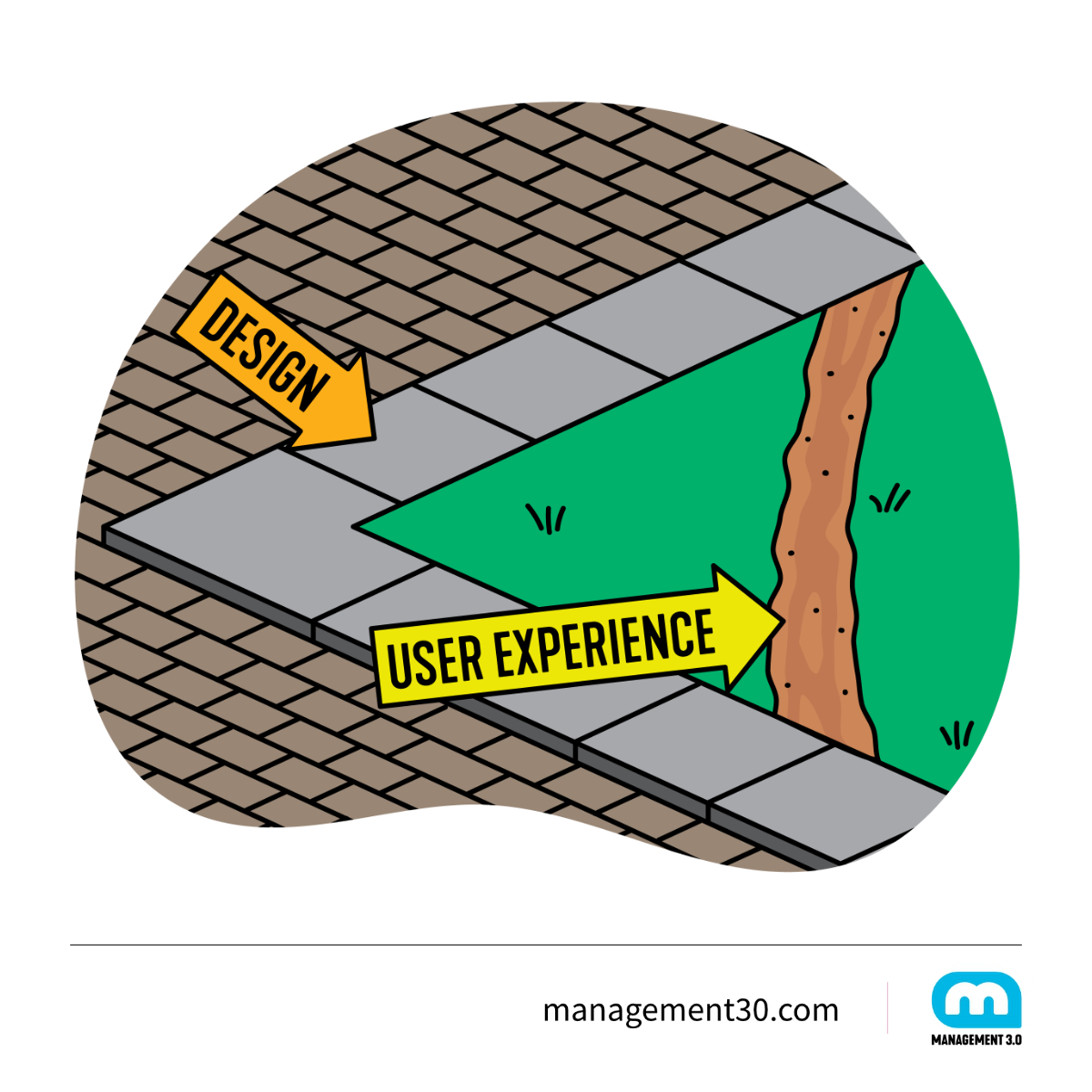
Applications of Design Thinking Across Fields
Design Thinking has driven the creation of user-centric products in diverse fields and industries, from healthcare to technology. Today, more and more startups, nonprofits, and large corporations are stepping into the real world to understand their users’ needs better. Let’s review examples from various industries to see how Design Thinking can improve not only business clients’ experiences but also the lives of individuals – as citizens or patients.
Intuitive and Accessible Voting System
Los Angeles County hired IDEO to design a new, adaptable voting system to replace the outdated one from the 1960s. The system was created in 2009 and was meant to be accessible to all voters, including those with disabilities, unfamiliar with technology, or speaking languages other than English. The result is a voting experience that supports equal access, meets the needs of today’s voters, and can be adaptable over time.
Better Life Quality for Elderly People
In 2007, Denmark’s Holstebro Municipality sought to improve the quality of life for its elderly citizens by revamping its meal service. The initial perception was that the food service just needed a better menu. However, ethnographic research revealed that the kitchen staff and the seniors who received the meals felt a sense of disconnection and low morale. The research team made the following key findings:
- Kitchen workers felt their skills were underutilized and bored due to repetitive menus.
- Seniors felt a loss of control over their food choices and disliked eating alone.
The project won design awards and served as a model for how to improve social services through user-centered design because meal orders increased by 500% in the first week, and the number of customers grew by 7%.
Addressing the High Mortality Rate of Premature and Low-Birth-Weight Babies
Each year, 20 million premature babies are born, with around four million dying within their first month. Most of these deaths occur in LMICs due to limited access to infant incubators. These life-saving devices cost a staggering $25,000, putting them far beyond reach for many healthcare facilities.
Linus Liang of Embrace Global and his team at Stanford’s d.school decided to tackle this challenge and create a $250 incubator. However, their research revealed a surprising truth: the bigger problem wasn’t the cost of incubators but their limitations. Traditional incubators are bulky, require electricity, and are impractical for rural births. This critical insight led them to a new approach. Instead of a conventional incubator, they designed an ultra-low-cost, portable infant warmer. This innovative device resembles a sleeping bag with a removable heating pad. Remarkably, it can maintain a baby’s ideal temperature for over four hours without electricity, all for under $25.
The Design Thinking Process Explained
Design Thinking is a process that involves five essential phases: Empathize, Define, Ideate, Prototype, and Test. These stages are iterative and non-linear, which means you can repeat them, carry them out in parallel, or go back to a previous stage at any point in the process.
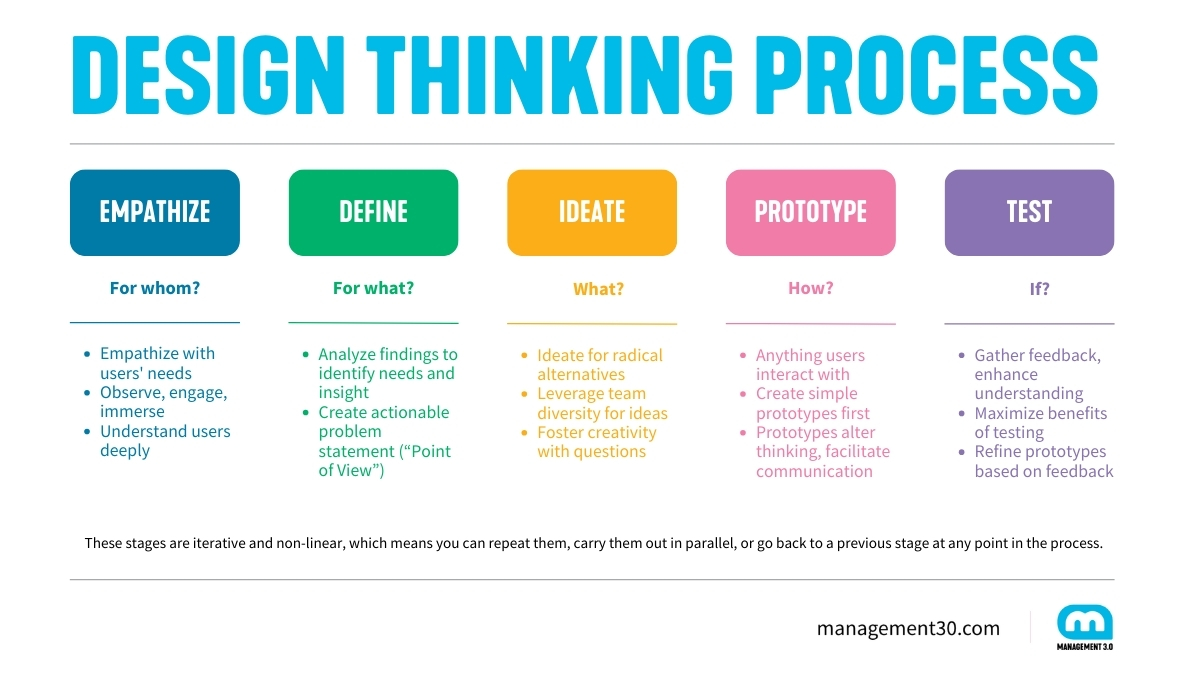
Empathize (For whom?)
Understanding and empathizing with users is crucial for human-centered design. The challenges you are trying to address usually belong to a specific group of users, and it’s important to build empathy for them. You can design solutions that meet their requirements by comprehending their needs, values, and emotions.
Here are effective ways to empathize:
- Observe how users interact with their environment—capture quotes, behaviors, and other notes that reflect their experience. Watching users gives clues about what they think and feel—what they need.
- Engage users directly—interact with and interview them. Engaging users reveals more profound insights into their beliefs and values.
- Immerse yourself in your users’ experience. Find (or create, if necessary) ways to immerse yourself in specific environments to understand firsthand who you’re designing for.
Empathizing is a crucial step in Design Thinking, and we may invest as much as 40-50% of our time in this step.
Define (For what?)
During the define mode, you analyze your empathy findings to identify the needs and insights, then define a significant challenge. You must understand your users and their environment to create an actionable problem statement called “Point of View.” Point of View is more than just defining the problem; it is a unique design vision considering your specific users. Thus, it is essential to understand the meaningful challenge and the user insights you can leverage.
A problem well-stated is a problem half-solved.
Charles F. Kettering
A remarkable Point of View has the following characteristics:
- It preserves the emotions and needs of the individual you are designing for.
- It uses strong language to convey the message.
- It uses understandable wording.
- It includes a vital insight.
- It generates numerous possibilities that can lead to an effective solution.
Let’s distinguish between needs and solutions! Don’t fall into the trap of premature solutions. For example, instead of saying, “John needs a bridge to get to the other side of the river,” say, “John needs a way to get to the other side.” As you can see, we close ourselves off from thinking about other options in the first sentence. Depending on John’s reasons, a boat or rubber boots may be enough.
Ideate (What?)
Ideate is the mode in which you generate radical design alternatives. Ideation aims to expand your thinking regarding possibilities and outcomes rather than focusing on a specific solution. It aims to explore a wide range of potential solutions with a diverse and plentiful collection of ideas. From this extensive range of ideas, you can create prototypes to test with users.
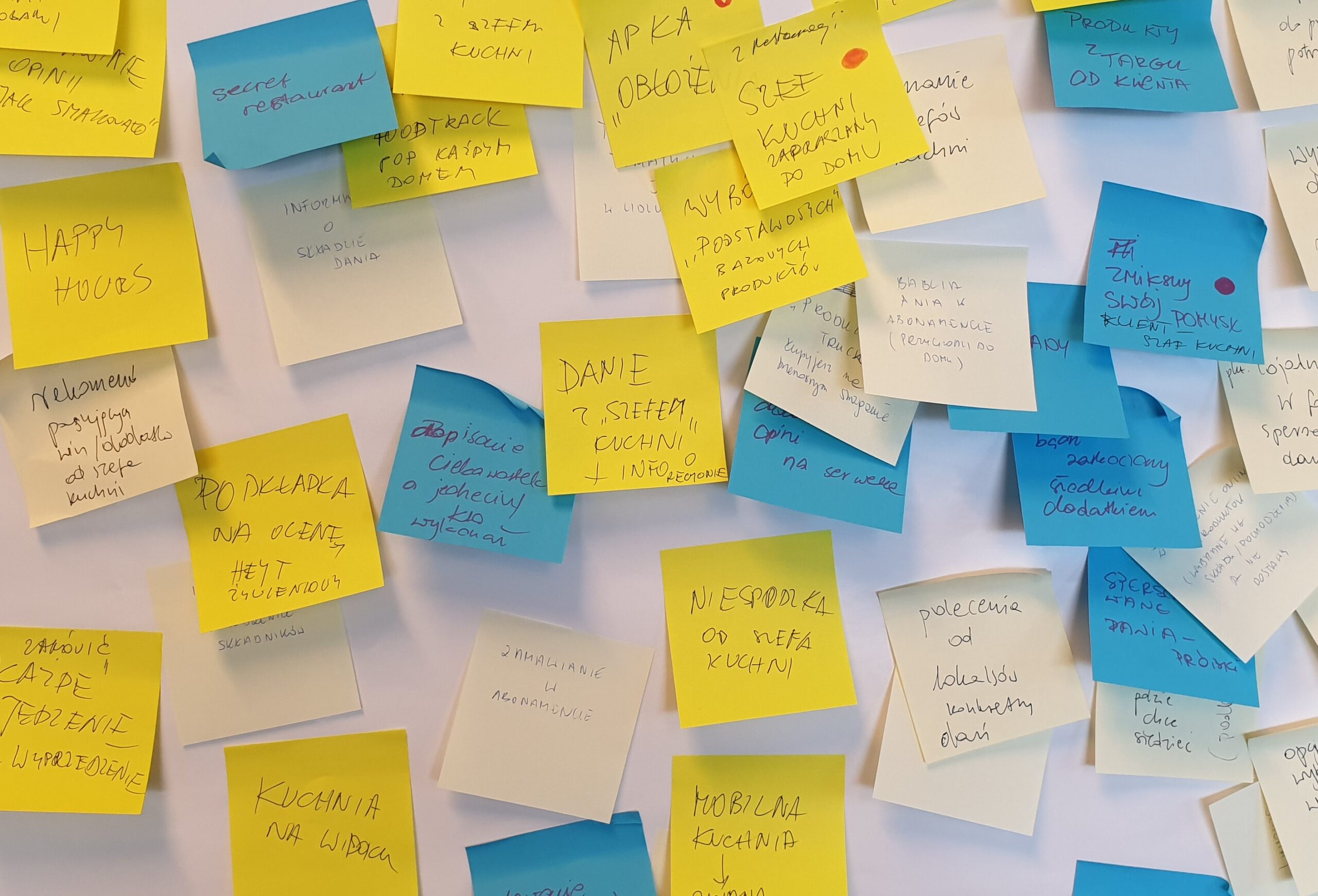
We generate ideas by leveraging the team’s diversity. Diverse teams bring varied perspectives, skills, and backgrounds to build upon each other’s ideas, enrich each other’s knowledge, and challenge each other’s assumptions in ways that accelerate the work. Remember to consider different types of diversity, such as skill sets, backgrounds, cultures, genders, and more. We don’t judge the ideas; we want to have many as wild and unexpected as possible.
We open our creativity by asking questions like:
- What if preschoolers solved this problem?
- What if there was no gravity?
- What if it was 100 times bigger?
- How would others (a grandfather, grandson, Buddhist, Mickey Mouse) solve this problem? How would the government or entrepreneur approach it?
- What if we had an unlimited budget?
Remember: No criticism, no whining!
Prototype (How?)
Creating prototypes effectively brings your ideas to life and allows you to test them out in the real world. A prototype can take many different forms, such as a wall of sticky notes, a role-playing activity, or even an object or mockup. To get the most out of your prototypes, it’s best to keep them simple and low-cost at first so you can quickly learn and explore different possibilities.
Prototyping serves two purposes: firstly, it alters our thinking about how to construct something and about the functions and interactions of these objects. The second advantage is that we have something to show and talk about with the user, which is much more productive than talking in abstract terms.

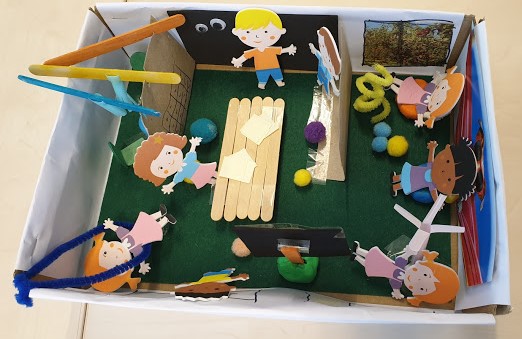
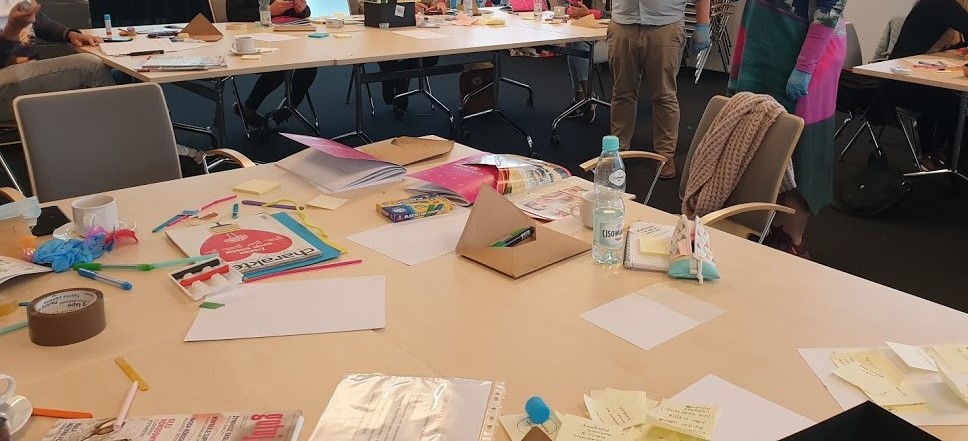
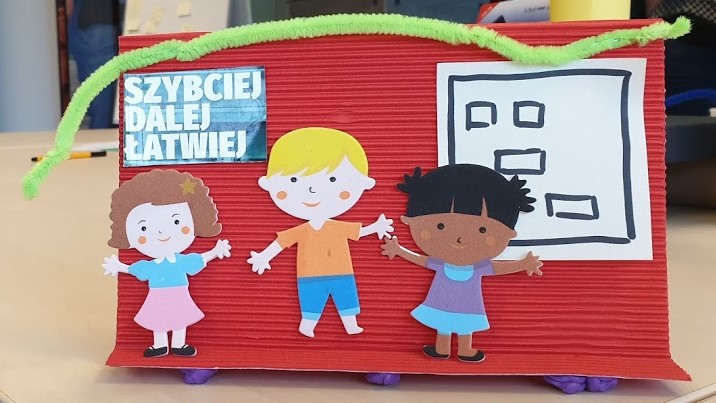
What is a prototype? A prototype is anything that users can interact with. A drawing, a genre scene, a mockup, a car built out of a matchbox. The objective is to visualize our initial ideas. Prototypes are made quickly and cheaply. Let’s think in terms of minutes and pennies. The initial question should be: how can we present our ideas using a prototype within 5 minutes? This is where natural creativity comes in. This is where the best inspirations come in.
Test (If?)
During the testing phase, you can gather feedback, improve solutions, and enhance the understanding of your users. This phase is about iterating low-resolution prototypes in the appropriate context of your users’ lives. Approach prototyping confidently but remain open to being wrong during testing.
Each minute you spend convincing others that your idea is remarkable is one minute less actually making it remarkable.
Jurgen Appelo #Workout
Here are ways to maximize the benefits of testing:
- Use testing to learn more about your users. Engage with users and observe their behavior to develop empathy and gain unexpected insights.
- Refine your prototypes and solutions based on the feedback you receive during testing. Sometimes, this means starting over from scratch!
- Continuously test and refine your Point of View. Your initial solution may need to be corrected, and testing can reveal that you have framed the problem incorrectly.
If you want to quickly go through the whole Design Thinking process, use this facilitator guide designed by d.school. Not only does this guide provide your prompts, but it also helps you time the session to manage it in about 90 minutes!
How Design Thinking and Management 3.0 Play Together
At the heart of Design Thinking, there are three main principles:
- A focus on user outcomes
- Restless reinvention
- Diverse Empowered Teams
They all go in line with Management 3.0’s five principles:

Always treat your employees exactly as you want them to treat your best customers. You can buy a person’s hand, but you can’t buy his heart.
Stephen Covey
Design Thinking focuses on understanding users (employees in Management 3.0) and creating solutions that meet their needs. It emphasizes user-centered design, continuous improvement, and collaboration within diverse teams. Management 3.0 aligns with these principles by advocating for employee engagement and improving work systems. It promotes self-management by fostering a positive work environment and co-creation among employees. In Management 3.0, we put an employee at the heart of everything. We want to care for their needs, understand their motivation, and keep them creative and engaged.
Both approaches aim to improve user/employee experience by putting people at the center and fostering a collaborative and innovative work environment. Many tools in Management 3.0 are used to understand employees’ (users’) experiences, which are related to the five steps of Design Thinking, such as:
- Empathize: Personal Map, Value Stories
- Define: Experiment Hypothesis
- Ideate: Improv Cards, Improvement Dialogue
- Prototype: Exploration Days
- Test: Internal Crowdfunding
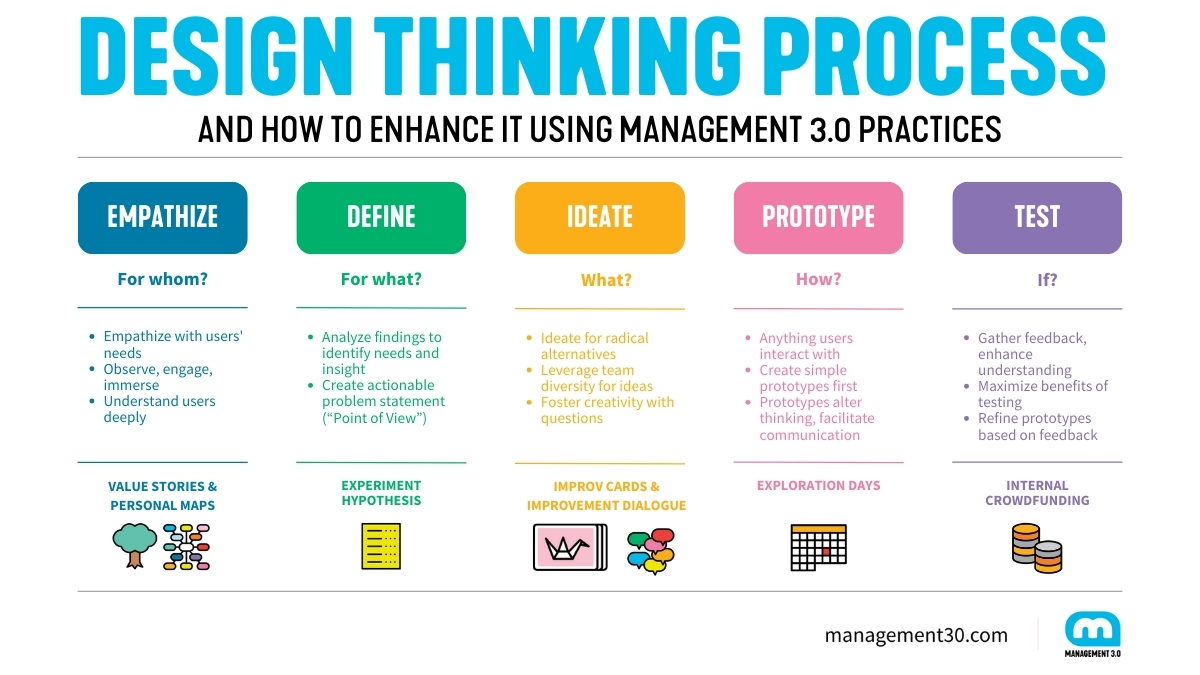
How do Design Thinking and Agile Play Together?
Once we understand how Design Thinking and Management 3.0 work together, another question arises: are Design Thinking and Agile different approaches, or can they coexist? Spoiler alert: yes, they can, and in fact, they complement each other quite well. While Design Thinking focuses on understanding the problem, Agile focuses on building the solution to that problem:
- Design Thinking sets the foundation: Use it to understand the user problem and brainstorm potential solutions. This helps Agile teams prioritize the right features.
- Agile builds and tests iteratively: Develop features in short sprints, gather user feedback through testing, and adapt as needed. This reinforces Design Thinking’s emphasis on continuous iteration.
Both approaches encourage ongoing learning and continuous improvement. Design Thinking can be used throughout development to ensure the product remains user-centered. To provide more examples of how they relate:
- Design Thinking starts by deeply understanding the user’s needs and challenges. This aligns with Agile’s focus on delivering value to customers.
- Just like Agile, Design Thinking is iterative. You can revisit stages and refine your approach as you learn more.
- Similar to Design Thinking’s prototyping stage, Agile encourages building basic versions of features to test and gather user feedback early and often.
- Both Agile and Design Thinking are flexible approaches that allow you to adjust courses based on new information.
Conclusion
Design Thinking is a powerful framework for solving complex problems and driving innovation. Its iterative nature, with a focus on prototyping and testing, enables continuous refinement and ensures that solutions are both creative and effective. Design Thinking also aligns with Agile ways of working, where the iterative process minimizes the risk of failure by allowing for course correction throughout the design process.
The world has never been changed by those who just accept bad service or bad products.
Jurgen Appelo #Workout
As we’ve seen, Design Thinking is not limited to a specific industry or field. From healthcare to technology, it has inspired ingenious solutions that have improved the lives of countless people: citizens, seniors, and infants. Educational institutions and leading corporations’ embrace of Design Thinking further underscores its growing importance today.
In conclusion, Design Thinking offers a valuable toolkit for anyone seeking to solve problems creatively and effectively. By embracing empathy, collaboration, and a willingness to experiment, Design Thinking empowers us to create a better future for ourselves and others.
Thus, it should be utilized as a powerful tool by every leader practicing Management 3.0.
Co-creation with Design Thinking is a collaborative problem-solving approach where diverse stakeholders work together to understand issues deeply, generate innovative ideas, and develop prototypes that are continuously refined through user feedback. By involving users, experts, and others in the process, this iterative approach fosters creativity and empathy, leading to solutions that better meet the needs of all involved parties.

